What we´re reading… June 2022
This month’s key articles were selected by Ryan Chadha, Jiang Liu, Alessandra Mazzola, Johns Matthew, and Eleonora DeMartin.
HEPATOLOGY
Transplantation
Recipient and Center Factors Associated With Immunosuppression Practice Beyond the First Year After Liver Transplantation and Impact on Outcomes
Background: Immunosuppression is a critical aspect of post-transplant management, yet practices at intermediate and late time points after liver transplantation (LT) are poorly characterized. More
American Journal of Transplantation
Patisiran treatment in patients with hereditary transthyretin-mediated amyloidosis with polyneuropathy after liver transplantation
Hereditary transthyretin-mediated (hATTR) amyloidosis, or ATTRv amyloidosis, is a progressive disease, for which liver transplantation (LT) has been a long-standing treatment. However, disease progression continues post-LT. This Phase 3b, open-label trial evaluated efficacy and safety of patisiran in patients with ATTRv amyloidosis with polyneuropathy progression post-LT. Primary endpoint was median transthyretin (TTR) reduction from baseline. More
Liver International
Galectin-3 is overexpressed in advanced cirrhosis and predicts post-liver transplant infectious complications
Background & aims: Patients with advanced cirrhosis often have immune dysfunction and are more susceptible to infections. Galectin-3 is a β-galactoside-binding lectin implicated in inflammation, immune regulation and liver fibrosis. We aim to investigate galectin-3 expression in advanced cirrhosis and its ability to predict post-transplant infectious complications. More
SURGERY
Transplantation
Delivering siRNA Compounds During HOPE to Modulate Organ Function: A Proof-of-Concept Study in a Rat Liver Transplant Model
Background: Apoptosis contributes to the severity of ischemia-reperfusion injury (IRI), limiting the use of extended criteria donors in liver transplantation (LT). Machine perfusion has been proposed as a platform to administer specific therapies to improve graft function. Alternatively, the inhibition of genes associated with apoptosis during machine perfusion could alleviate IRI post-LT. The aim of the study was to investigate whether inhibition of an apoptosis-associated gene (FAS) using a small interfering RNA (siRNA) approach could alleviate IRI in a rat LT model. More
Journal of Pediatric Surgery
The impact of low recipient weight [≤ 7kg] on long-term outcomes in 1078 pediatric living donor liver transplantations
Background: infants who require liver transplantation represent a treatment challenge because chronic liver disease at this early age affects the child’s growth and development during a critical phase. The aim is to compare demographics, operative data, and long-term outcomes according to recipient weight at the time of LDLT. More
Hepatobiliary and Pancreatic Diseases International
Robotic surgery and liver transplantation: A single-center experience of 501 robotic donor hepatectomies
Background: Over the past two decades robotic surgery has been introduced to many areas including liver surgery. Laparoscopic liver surgery is an alternative minimally invasive approach. However, moving on to the complexity of living donor hepatectomies, the advantages of robotic versus laparoscopic approach have convinced us to establish the robotic platform as a standard for living donor hepatectomy. More
ANESTHESIOLOGY AND CRITICAL CARE
Advances in Medical Sciences
Intraoperative dialysis with the use of a mobile dialysis system during liver transplantation
Purpose: Over the last few years, transplant centers have started to use various intraoperative renal replacement therapy (ioRRT) modalities during liver transplantation (LT) in patients with pre-existing renal impairment. Here, we present a study on the safety and clinical outcomes of intraoperative hemodialysis (ioHD) performed using a mobile dialysis system during LT. More
Liver Transplantation
Intraoperative intracardiac thrombus in liver transplantation: A 9-year retrospective review focusing on treatment and outcomes
This study characterizes incidence and outcomes surrounding intracardiac thrombosis (ICT) during liver transplantation over 9 years at a single center before and after the routine use of transesophageal echocardiography (TEE). More
Diagnostics
Faster Time to Treatment Decision of Viscoelastic Coagulation Test Results through Improved Perception with the Animated Visual Clot: A Multicenter Comparative Eye-Tracking Study
As the interpretation of viscoelastic coagulation test results remains challenging, we created Visual Clot, an animated blood clot aiming to facilitate raw rotational thromboelastometry (ROTEM) parameters. This study investigated anesthesia personnel’s cognitive processing in managing simulated bleeding scenarios using eye-tracking technology. More





